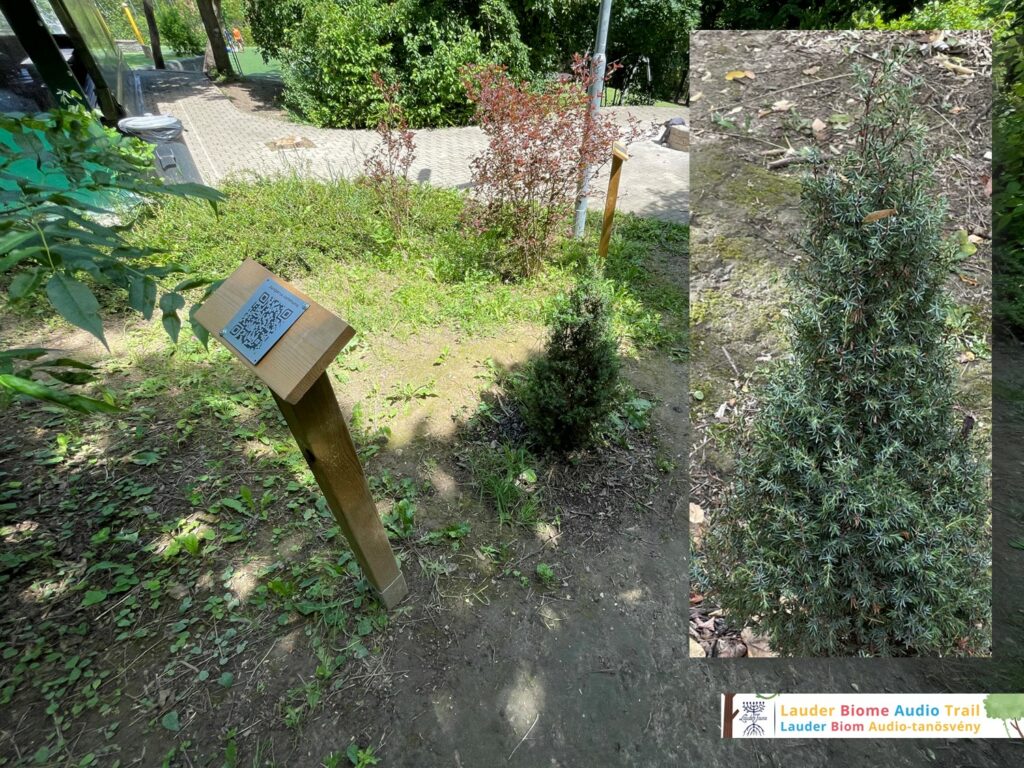6. Common Juniper / Juniperus communis

You are standing in front of a coniferous tree or shrub (depending on who you ask) that is a cozy home for wildlife and a gin-drinker’s delight, the juniper is a much-loved evergreen that brightens up the winter months.
Common juniper is an evergreen conifer with its mature trees reaching a height of 10m and living for up to 200 years. Its bark is grey-brown and peels with age, and its twigs are reddish brown. Its small, needle-like leaves are green with broad silver bands on the inner side, curving slightly to a sharp, prickly point.
Common juniper is dioecious, meaning that male and female structures grow on separate trees. Male structures are small, yellow and globular, and grow in leaf axils near the tips of twigs. Once pollinated by wind, the green female structures develop into fleshy, purple, aromatic, berry-like cones. These are eaten and distributed by birds. When young, the berries are green but over 18 months or so they mature to purple-black.
Common juniper is native to the UK, Europe and much of the northern hemisphere. It thrives on chalk lowland, moorland, in rocky areas and old native-pine woodland. It is most often found as a low-growing, spreading shrub or small tree.
Common juniper provides dense cover for nesting birds, such as the goldcrest and firecrest, and, in northern upland areas, the black grouse. It is the food plant for caterpillars of many species of moth, including the juniper carpet moth, juniper pug and chestnut-coloured carpet. A number of birds eat the fruit, including the fieldfare, song thrush, mistle thrush and ring ouzel.
Back to the menu of the learning path
6. Közönséges Boróka / Juniperus communis
Ön egy tűlevelű fa vagy bokor előtt áll (attól függ, kit kérdez), amely hangulatos otthont nyújt a vadon élő állatoknak, és egy közkedvelt örökzöld, amely feldobja a téli hónapokat.
A boróka egy örökzöld tűlevelű fa, amelynek kifejlett példányai elérik a 10 méteres magasságot, és akár 200 évig is élhetnek. A kéreg színe szürkésbarna, és a kor előrehaladtával hámlik, gallyai pedig vörösesbarnák. Apró, tűszerű levelei zöldek, belső oldalukon széles, ezüstös sávokkal, enyhén ívelt, éles, szúrós hegyűek.
A közönséges boróka kétszikű, ami azt jelenti, hogy a hím és a nőstény szervezetek külön fákon nőnek. A hímivarú szerkezetek kicsik, sárgák és gömbölydedek, és a gallyak csúcsához közeli levélnyílásban nőnek. Miután a szél beporozza őket, a zöld nőstény szerkezetek húsos, lila, aromás, bogyószerű tobozokká fejlődnek. Ezeket a madarak fogyasztják és terjesztik. Fiatalon a bogyók zöldek, de körülbelül 18 hónap alatt lila-feketére érnek.
